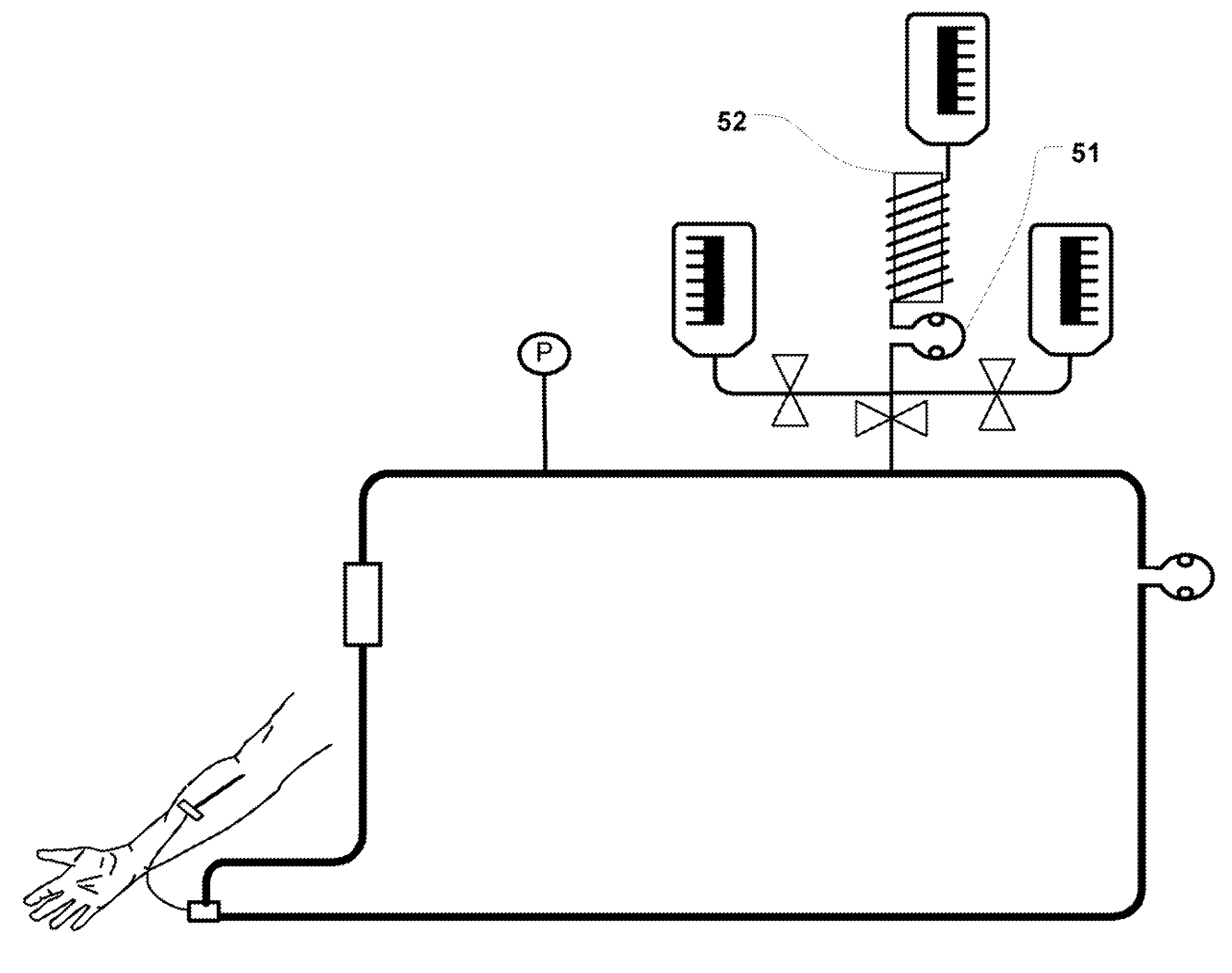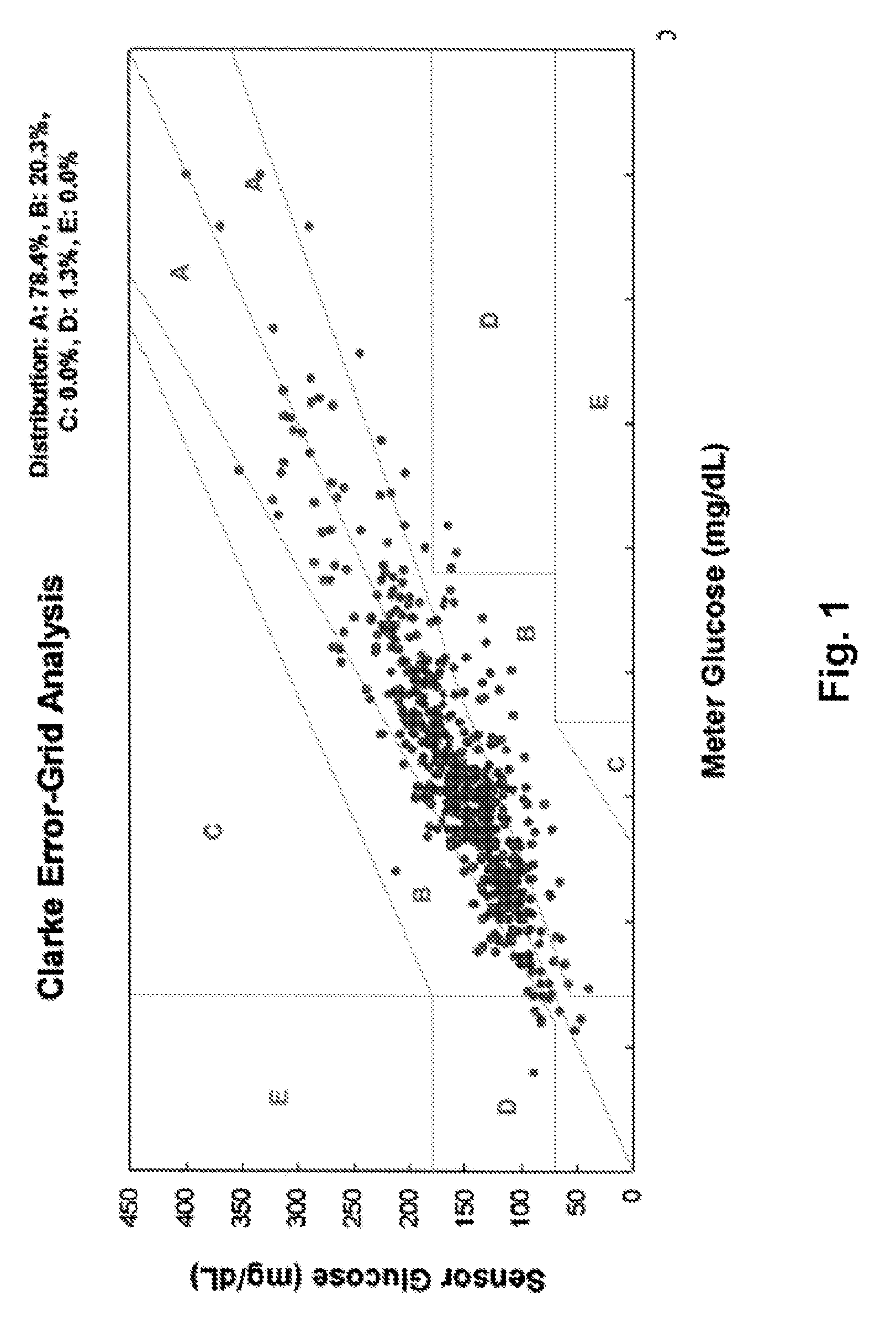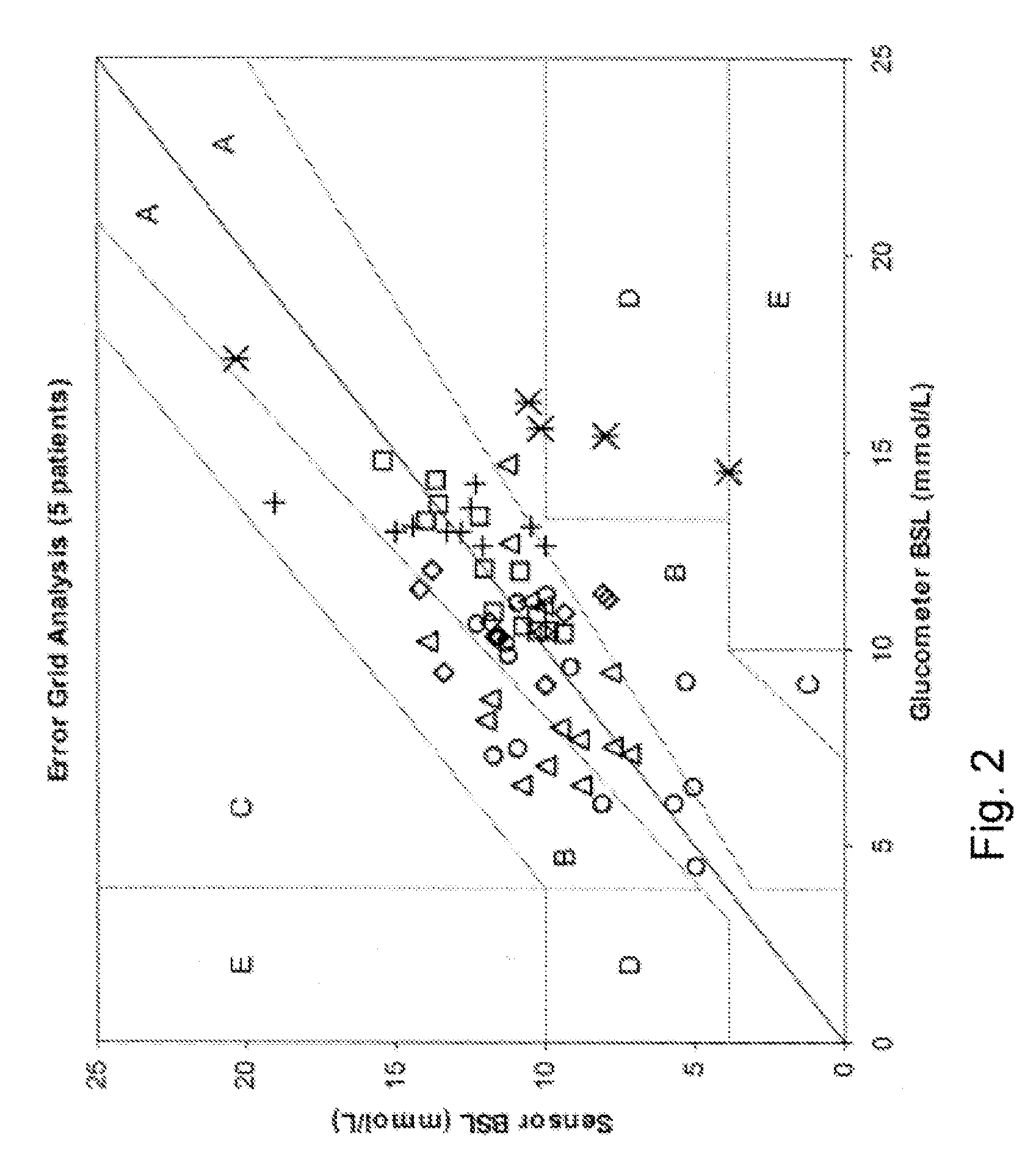Blood Analyte Determinations
- Summary
- Abstract
- Description
- Claims
- Application Information
AI Technical Summary
Benefits of technology
Problems solved by technology
Method used
Image
Examples
Embodiment Construction
[0051]The present invention comprises methods and apparatuses that can provide measurement of glucose and other analytes with a variety of sensors without many of the performance-degrading problems of conventional approaches. An apparatus according to the present invention comprises a blood access system, adapted to remove blood from a body and infuse at least a portion of the removed blood back into the body. Such an apparatus also comprises an analyte sensor, mounted with the blood access system such that the analyte sensor measures the analyte in the blood that has been removed from the body by the blood access system. A method according to the present invention comprises removing blood from a body, using an analyte sensor to measure an analyte in the removed blood, and infusing at least a portion of the removed blood back into the body.
[0052]The performance of the analyte sensor in the present invention can be dramatically improved compared with conventional applications by mini...
PUM
 Login to View More
Login to View More Abstract
Description
Claims
Application Information
 Login to View More
Login to View More - R&D
- Intellectual Property
- Life Sciences
- Materials
- Tech Scout
- Unparalleled Data Quality
- Higher Quality Content
- 60% Fewer Hallucinations
Browse by: Latest US Patents, China's latest patents, Technical Efficacy Thesaurus, Application Domain, Technology Topic, Popular Technical Reports.
© 2025 PatSnap. All rights reserved.Legal|Privacy policy|Modern Slavery Act Transparency Statement|Sitemap|About US| Contact US: help@patsnap.com



